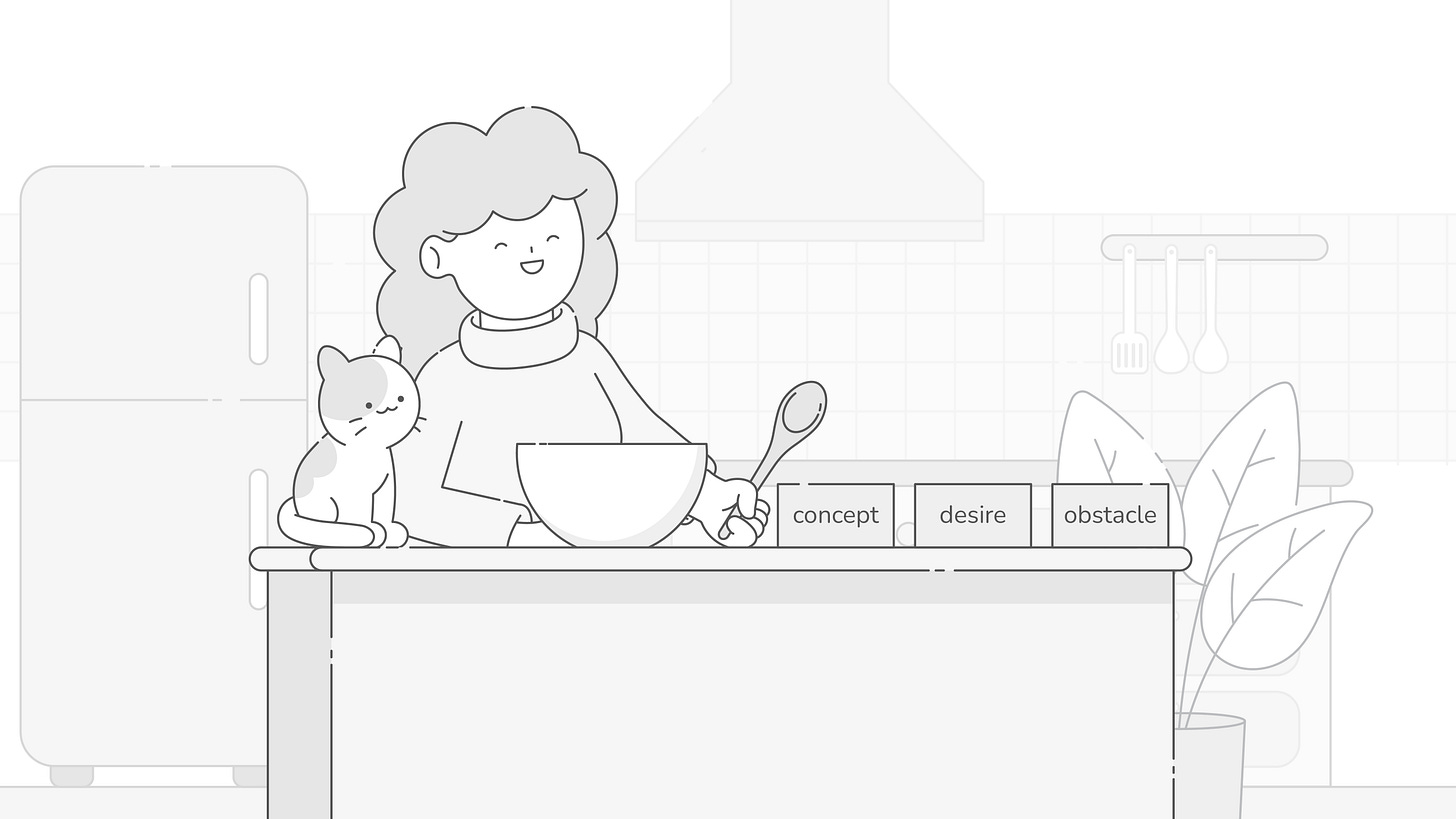Let’s circle back to the basics of characters, a.k.a., how do I start?
There are countless character sheets on the internet, but most of them feel like filling out a shopping list. Hair color. Age. Favorite snack. Mother’s cousin’s occupation. (Okay, maybe not that last one—but you get it.)
Those details might be fun, but they don’t breathe life into a character.
If you want a protagonist that lives on the page and pushes the story forward, you only need three core ingredients to start:
An interesting concept. A driving desire. And a meaningful obstacle.
Just about everything else will attend to itself in due time.
Let’s go over this recipe.
1. Give Them an Interesting Concept
This is the “hook” of the character—the thing that makes us perk our heads and say, “Tell me more.”
Not just what the character is or does, but what makes them a little surprising.
She’s a thief, but she only steals from other criminals.
He’s priest, but he secretly doesn’t believe.
She’s a runaway princess, but she moonlights as a monster hunter.
He’s a suburban dad who thinks he’s being watched by angels—but they’re real, and they’re not nice.
These aren’t full backstories. They’re just sparks, but they hint at contradiction, irony, mystery, a breaking of stereotypes. And that’s what pulls readers in.
Try to define your character in a single sentence, and use the word “BUT” in it. That usually gives you a good starting place.
2. Give Them a Driving Desire
Every great character wants something.
It doesn’t have to be world-shaking. But it should matter deeply to them.
It could be:
Reuniting with someone they’ve lost
Proving they belong
Keeping a dangerous secret buried
Starting over, clean
This desire will shape every decision, every reaction, every turning point.
Without desire, your character isn’t a protagonist—they’re a witness, reacting to the story instead of shaping it.
3. Put Something in Their Way
Next, we take that desire and say: “Cool. Let’s make that really hard for them to achieve.”
Because desire without resistance isn’t story. It’s a to-do list.
So ask:
What’s the external obstacle? (An enemy, a system, a situation?)
What’s the internal obstacle? (Fear? Shame? A false belief?)
What’s the moral obstacle? (What will they have to risk—or compromise—to get it?)
In other words, they want something. They can’t have it, at least not easily. And the way they fight, fail, adapt, and change in pursuit of it? That’s your story right there.
A Prompt to Try
Pick an interesting character idea—just a sentence, but with a twist.
Now ask:
What do they want more than anything?
What stands in their way—both external and internal?
Write that down.
Bam.
You’ve just started a character worth following in a story worth reading.
If this post helped strip character creation down to the good stuff, hit the ❤️ and share it with someone else building their next protagonist.
Because great characters aren’t built from trivia. They’re built from surprise, desire, and conflict.
See you next week,
Tal Kilim



